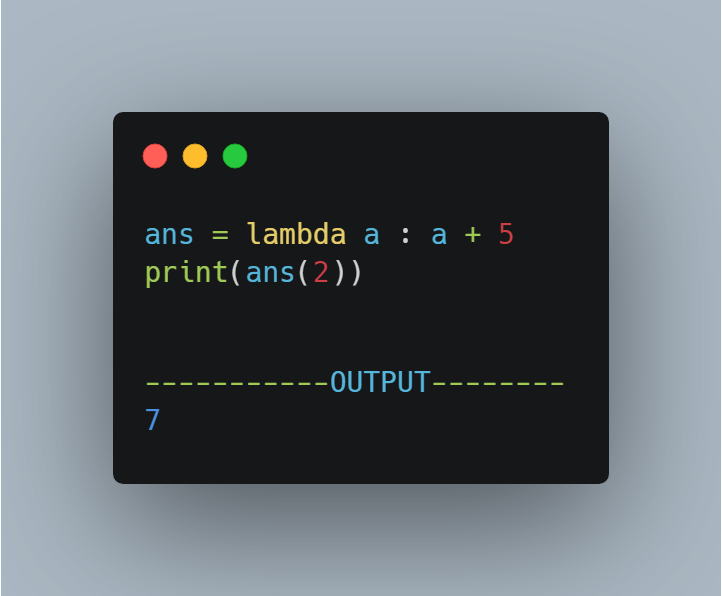Functions in Python
A function is known as the block of code which only gets executed and run when it is called. Basically, a function is a block of organized, reusable code which is generally used to perform a single or a given number of actions.
In Python Programming language there are several built-in functions which we use in our basics program and some functions are used in each and every program like - Print() and in python you can even create your own functions. A function is used to return data in the form of a result.
Creating and Calling a Function
Function in Python Programming Language is defined through def keyword. Now we will see some basic and important steps about how we can create a function:-

To call a function in Python, use the function name which you had used followed by parenthesis:

So the concept of Creating and Calling a function in Python Programming Language has been completed now.
Example of Functions in Python
Now, we will understand the use of function and how it works with the help of an example:-

In the above code, we had used a function known as func1 and we had assigned the value of Rohit to func1 thus we had received the desired output when we called the function and now we had understood the basic example of a function.
Lambda Functions
In Python Lambda functions are also known by the name of Anonymous function. Generally, Lambda functions are single-line functions that are declared without any name and these functions can have any number of arguments but they must contain only one expression. These are also known as One-Liner functions. These functions are similar to regular functions and these lambda functions are also written with the help of the def keyword.

Syntax of Lambda Functions / Anonymous Functions
Let's look at the syntax of Lambda functions:-

As you can see that the syntax of the Lambda function is written in a single line, this is the reason why these are known as one-liner functions. These functions can take several arguments.
Now we will take few examples which will explain to us about the use of Lambda Functions / Anonymous Functions
- When we have one argument
Here we will take the case when we have only a single argument i.e. a

2. When we have two arguments
Now we will take two arguments which are a and b and will use lambda functions with the help of these two arguments.

3. When we have three arguments
In this case, we will take three arguments a, b and c, and will use all three arguments in lambda functions

So we had understood the use of Lambda functions by taking all the basic examples of lambda functions.
Why use Lambda Functions instead of regular Functions?
As lambda functions are one-liner functions so they are faster than regular def functions. Also, lambda functions provide higher efficiency than def functions. And we use these lambda functions when we require nameless functions for a short span of time. These Lambda Functions are used along with some built-in functions like they are used with map(), filter() and reduce() functions. Lambda Functions does not include any return statement but regular functions include a return statement. Generally, lambda functions contain expressions that are returned by nature.
Both Functions provides a good framework but Lambda functions provide better platform than regular def functions
Thanks for Reading. Hoping you liked it. Many more to come. Make sure you subscribe to our newsletter.
NOTE:- The awesome artwork used in this article was created by Jean Le Boulanger
